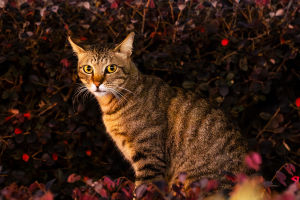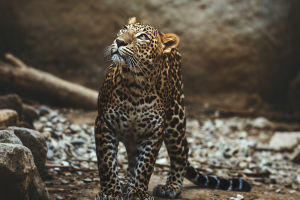let's step into the rainforest and meet one of nature's strangest birds—the hoatzin.
Found mainly in the swamps, mangroves, and riverbanks of the Amazon and Orinoco basins in South America, this bird looks like it belongs to another age.
It is the only surviving member of its family and order, which makes it a living relic of evolution. Scientists still debate its exact classification, but we can agree on one thing: the hoatzin is one of the most unique birds in the world.
A Strange Appearance
When we first see a hoatzin, we might mistake it for a creature from prehistoric times. About 26 inches (65 cm) long, it has a long neck, a small head, and a bare blue face with striking red eyes. Its spiky reddish-brown crest sticks up like a crown, giving it a dramatic look.
The bird's wings and body shine with shades of brown, yellow, and chestnut, and when it spreads its wings, we notice rich colors glowing under the feathers. Its long tail ends with a pale band, adding to its unusual beauty.
A Noisy Bird
We'll likely hear a hoatzin before spotting one. They are known for their loud, harsh sounds—grunts, groans, wheezes, and even burp-like calls. These sounds often come with body movements like wing flaps or hopping between branches. If we're near a riverside in the Amazon, the hoatzin's noise quickly gives away its presence.
Baby Hoatzins with Claws
What makes this bird even more amazing is its chicks. Baby hoatzins hatch with two claws on each wing. Right after birth, they can use these claws to climb branches and move around safely. If predators like hawks attack, the chicks jump into the water, swim beneath the surface, and later climb back to their nest using their claws.
This unusual feature reminds us of the ancient Archaeopteryx, a dinosaur-like bird fossil that also had wing claws. Watching a hoatzin chick is like looking at a snapshot of evolution still alive today.
A Vegetarian Bird with a Cow's Stomach
Despite its fierce look, the hoatzin is a gentle leaf-eater. Unlike most birds, it doesn't eat insects or meat. Instead, it survives mainly on leaves, flowers, and fruits. What's even stranger is its digestive system—it works like a cow's. The hoatzin's enlarged crop ferments food with the help of bacteria, breaking down tough plant material.
Because of this, the bird gives off a musky smell, earning it the nickname "stinkbird." Still, this odd stomach helps the hoatzin live where other birds can't.
A National Treasure
For the people of Guyana, the hoatzin is more than just a bird—it's a national symbol. Locally called the Canje pheasant, it represents the country's wild beauty and heritage. Spotting a hoatzin in the forest is not just a nature experience but also a cultural one, tying us to the history of the land.
Why the Hoatzin Is Special
The hoatzin is like a puzzle piece of nature, connecting the past to the present. With its claws, it reminds us of ancient birds. With its strange stomach, it shows us how creative evolution can be. With its loud calls, it fills the rainforest with sound and life. For travelers, birdwatchers, and nature lovers, the hoatzin is a true wonder waiting to be discovered.
Wonder of the Wild
Lykkers, the hoatzin may be noisy, a bit smelly, and a little clumsy, but it's one of the most extraordinary birds we could ever see. When we explore the rivers and wetlands of the Amazon or Orinoco, spotting this "living fossil" feels like stepping back in time. It's not just birdwatching—it's witnessing evolution in action.
If we get the chance, let's make the hoatzin a highlight of our adventure. After all, how often do we encounter a creature that carries both history and mystery on its wings?
AMAZON'S MYSTERY BIRD | Up Close With The Hoatzin
Video by Nature Wild Tracks


